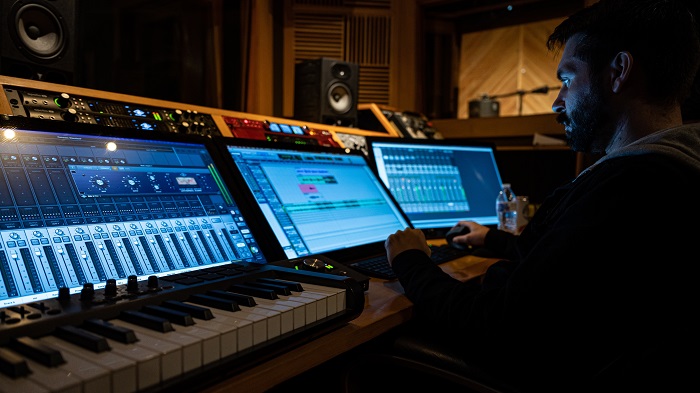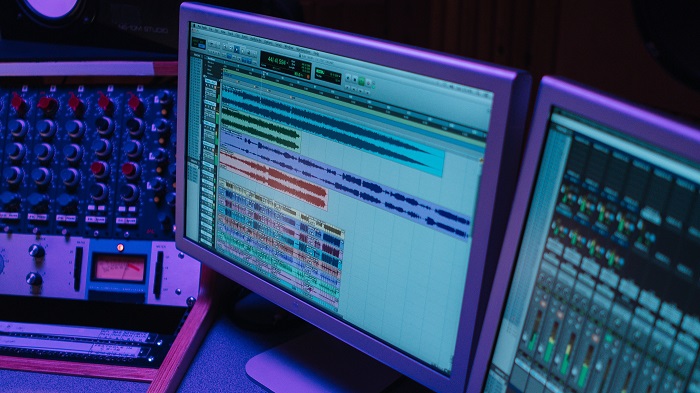Whether or not you’re in the music industry, you’ve certainly come across a remix or two.
Fun fact: remixes weren’t introduced to the music scene until the late sixties.
Actually, we owe the richness of remixes to the colorful Jamaican life.
Tom Moulton later popularized dance remixes with her club mixtape.
That said, this article will cover every possible scope relating to remixes including what is a remix, how do you make one, and what has made them so popular?
Let’s get started!
What Is a Remix?
To put it simply, a remix is an altered version of a popular song.
A track is stripped down to its basic components and a producer or remixer will start recomposing the elements to suit his own taste.
Additionally, a remixer might also include new vocals, sounds, or even a different music track to revamp the original song.
In fact, a remix of a song might result in changing its genre too.
For example, did you know that the popular song I Took A Pill In Ibiza was initially labeled as a pop-folk song?
What made it widely famous was the Tropical House spin that well-known remixers, such as SeeB, created.
In other words, we can identify a remix as the process of transforming an existing track into a new one that can stand on its own.
In a creative sense, a remix could be the result of something as simple as altering the original arrangements of a song.
In fact, a remix could just as well be defined as the act of contorting an existent track.
The limits of how much a remixer can change are endless, so long as a few of the used song’s elements remain.
How Is a Remix Made?

The process of remixing a song differs from one creative person to another. Each producer has their own unique thumbprint which they follow when spinning tracks.
That said, the basics of creating a remix don’t differ that much.
For starters, among the first elements a remixer should be familiar with, are the stems of a song.
Stems refer to each and every component that makes up the entirety of a song.
Drum solos, bass lines, guitar riffs, and the lead instrumental line are all fine examples of a song’s stems.
Each of these individual recordings plays a huge role in creating a hit remix of a song.
Fun fact: stems are particularly hard to come by unless officially provided by the label or the owner of the song in question.
That’s mainly because popular artists and producers don’t release in-studio stems to just anyone.
Only well-known remixers seeking to collaborate on the track by remixing it get that privilege.
In other words, an unauthorized remix of a song is illegal. That doesn’t mean that you can’t still mix and master a song’s stems to create a new sound.
Many remixers simply spin the vocals around and discard the lead music altogether for something of their own creation.
What Are the Different Kinds of Remixes?
The results of remixing a track, as we’ve mentioned before, are endless.
Since a song is typically made up of several layers, what a producer can do with them will depend on the limits of their creativity and talent.

For instance, a layer could be removed or changed completely.
New stems could be added in an attempt to change the song’s genre or tempo. A remixer may also choose to turn up certain layers or tune them down.
Due to the infinite possibilities of altering a track, there are about six different kinds of remixes.
In this section, we go through them one by one, both identifying and giving an example for each.
The Official Remix
By standard, official remixes are requested by the original label or artist of the song.
A remixer is thus given the authorization to use the in-studio stems and vocals to their liking.
Typically, big producers, such as Steve Aoki and DJ Snake, are then provided with the lead melodies, basslines, main vocals, and even synth patches to create a memorable remix.
Since creating an official remix of a track is considered a gig, remixers get issued a fee for their work, plus a percentage of the remix’s sales.
Additionally, the direction that most mixers head into when remixing is the dance club genre.
It’s a way to elevate a track and maybe give a sound to smaller artists too.
The Bootleg

While the official remix is the legal altering of a track, a bootleg version of the same track is the illegal remixing of it.
Bootlegs are often taken down due to copyright claims.
Bootleg remixers aren’t authorized to use the song’s stems to create a mix. They often resort to working with multitrack stems, but those are harder to come by.
Usually, bootleggers just use sections from the single stereo mix of the track.
If they can’t access them, they’ll use DIY melodies and vocals to create their unofficial remix.
Producing bootlegs can kickstart a small artist’s career, though.
Sickick, for example, was and still is known for adding his own twist on popular songs, such as Bruno Mars’ Talking to the Moon.
The Mashup
Mashups are a great loophole that many remixers appreciate since it allows them to create remixes without getting a copyright strike.
In essence, a mashup is the mixing of two songs together.
Most of the time, a producer will pick tracks that have similar basslines or instrumental backgrounds to mash together.
Sometimes though, a remixer would just take the vocals of one song and add them to the music of another.
These kinds of mashups are typically played in DJ sets and clubs.
As a result, mashups are a fresh take on not one, but two tracks. Artists, such as Cut Up Boys, actually based their whole career on creating epic mashups.
The VIP Remix

VIP here stands for ‘variation in production’. From the name, you can tell that a VIP remix is to slightly alter the production of a song to give the track a new spin.
The only difference between a VIP remix and a regular one is that the original producer of the song is the one who creates the VIP mix.
Among the many mixing tricks a VIP remix might include are tweaking the guitar riffs, adding new chords, changing drum patterns, and creating new vocals.
A producer may also choose the artist’s most well-known song to make a VIP remix out of.
This way, they can use its popularity to their advantage. A good example is Elk Road’s remix of LP’s Lost On You.
The Club Remix
Much like the VIP remix, the club remix is also carried out by the initial producer of the track.
By creating custom edits, the song may end up appealing to different markets and audiences.
Typically, club remixes aren’t as fancy or complicated as the other remixes. That’s because remixers usually create such edits to be played in clubs or on the radio.
Not only that, but club edits can help a DJ spin them quicker too.
Minor changes, such as new kick drums, increasing the time of the beat drop, or adding a livelier outro to the song go a long way.
Popular club edits involve remixing songs by DJ Khaled, Afrojack, and Skrillex.
Their tracks, and those similar to their work, are easier to extend and play around with.
The Re-Edit

Re-edits are not so different from club or radio edits. Their main purpose is to be easily mixed in clubs and parties as well.
Plus, re-edits aren’t always created by the original producers of the song.
In fact, re-edit remixes are more popular with DJs since they involve a lot of rearranging.
Re-editing means taking a song’s stereo mix and altering it to fit your clubbing needs. The process may include simplifying complicated stems or lengthening the beat drop.
The good thing about re-edits is that they normally don’t feature any new additions—unlike VIP remixes, for example.
A popular re-edit is Michael Cook’s spin on the Beach Boys’ God Only Knows.
Why Are Remixes So Popular?
So what makes remixes popular? Well, for starters, a remix can help give a platform to smaller, lesser-known artists.
By mixing their tracks to create club or dance music, the song is bound to reach a bigger audience.
A prime example of this would be OMI’s Cheerleader that only gained popularity, three years after its release, due to Felix Jaehn’s remix.

Not only did this give OMI a standing, but he also generated money from music royalties.
That’s only the beneficial side of a remix, though. Another reason why remixes are so popular is that they serve an artistic purpose too.
With a remix, you can edit the original track by mixing stems or changing tempos.
You may play around with the track’s hook, or main vocals, to create a newer sound. You can even improve on outdated songs to rebirth them into a new century.







